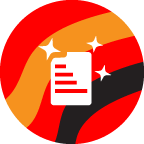Badges
Accepted Solutions
Likes Received
Posts
Discussions
Ideas
Blog Posts
-
Well, that use of FlowBoost is described in the FlowBoost user guide as well. And this blog post has an enhancement to it.
854 0 0Discussions -
You can’t have two tags or two s, this is a very strange looking document.
1091 0 0Discussions -
You absolutely can have multiple Velocity {{my.tokens}} in one email! It's the only way to stay sane when using complex logic: you have tokens that store macros, others that do filtering, others that do output. Would be impossible to use Velocity effective otherwise, imo.However, they do not run “in...
1240 4 1Discussions -
What is the nature of these 3 fields? Are they lookups?
584 0 0Discussions -
FlowBoost (i.e. JS) to return the highest value among a set of scores is just:highScore = Math.max({{lead.Score Product A}}, {{lead.Score Product B}}, {{lead.Score Product C}}); To return the name of a field with the highest score do something fun:scores = [ { name: "Product A", value: {{lead.Score...
561 1 0Discussions -
What’s the exact relationship between this object and the Contact/Account/Lead objects in SFDC?
633 0 2Discussions -
You can export the raw data using the REST API and create whatever reports you want based on that data. But you can’t automatically export pre-rolled Marketo reports. (OK, you can send subscription emails to an email-to-database kind of service, but that’s a whole other ball of wax.)
282 0 0Discussions -
Not sure I’d be going for a {{my.token}} here as that’ll apply to all emails in program or folder. A ${mktoVariable} is what I’d use for button text if it’s going to be updated via API anyway, that is, if the permission structure of tokens vs. variables doesn’t matter.
360 0 0Discussions -
This post is 10 years old. Please open a new thread if you have a similar question.The code you posted will not work at all. It’s clearly not tested; at no time are you saving the IP address to Marketo.People don’t just post from a single IP address, so even in the case where you do save the IP addr...
461 0 0Discussions -
https://developer.adobe.com/marketo-apis/api/mapi/#tag/Usage
994 2 2Discussions
Top Badges Earned
-
 Applaud 2000
Earned on 2.08.21
Earned by 1 people
Select to learn more
Applaud 2000
Earned on 2.08.21
Earned by 1 people
Select to learn more
-
 Validate 500
Earned on 11.04.22
Earned by 2 people
Select to learn more
Validate 500
Earned on 11.04.22
Earned by 2 people
Select to learn more
-
 Artisan
Earned on 2.10.21
Earned by 7 people
Select to learn more
Artisan
Earned on 2.10.21
Earned by 7 people
Select to learn more
-
 Originator
Earned on 2.10.21
Earned by 21 people
Select to learn more
Originator
Earned on 2.10.21
Earned by 21 people
Select to learn more
-
 Publish 100
Earned on 10.05.21
Earned by 3 people
Select to learn more
Publish 100
Earned on 10.05.21
Earned by 3 people
Select to learn more